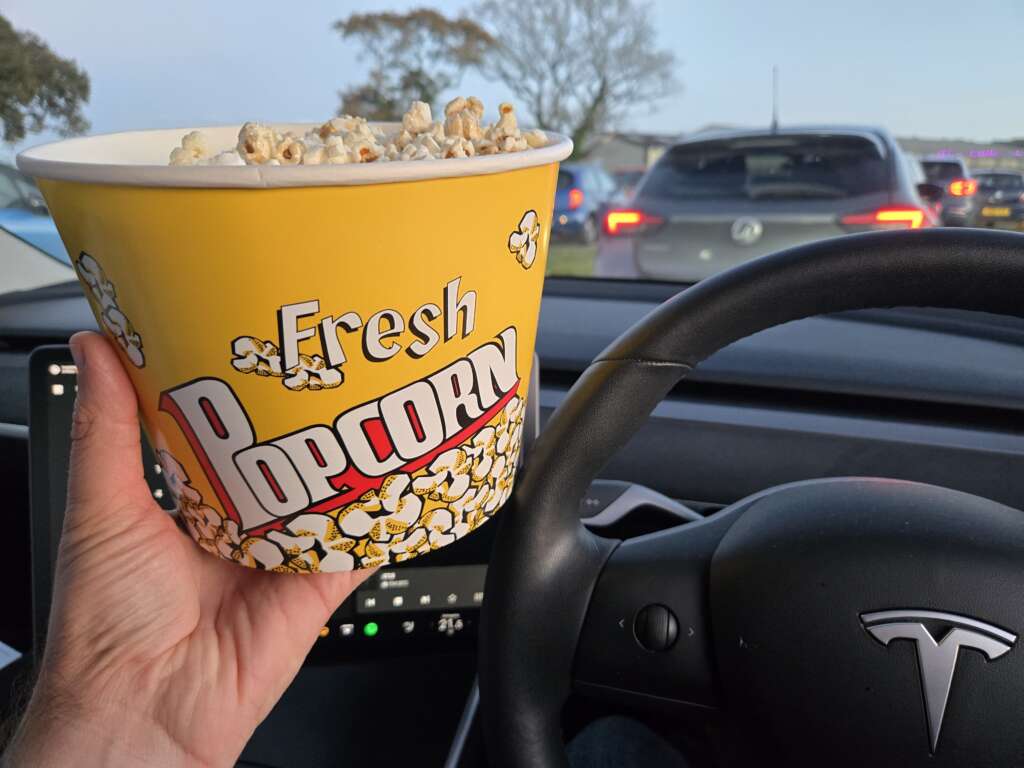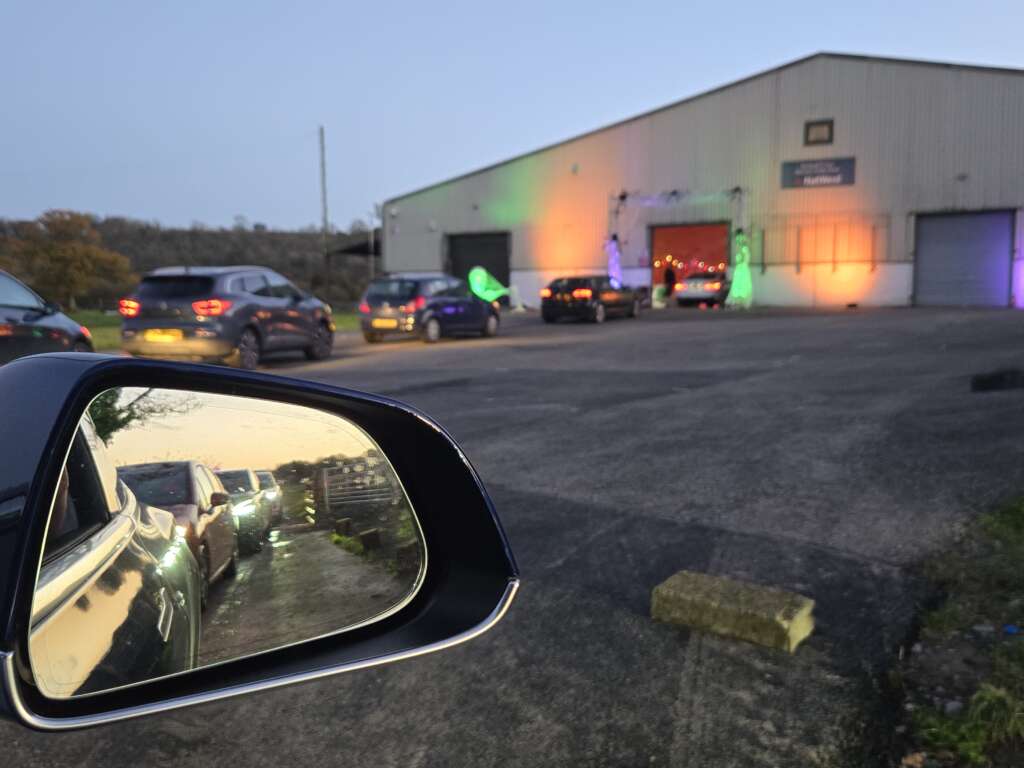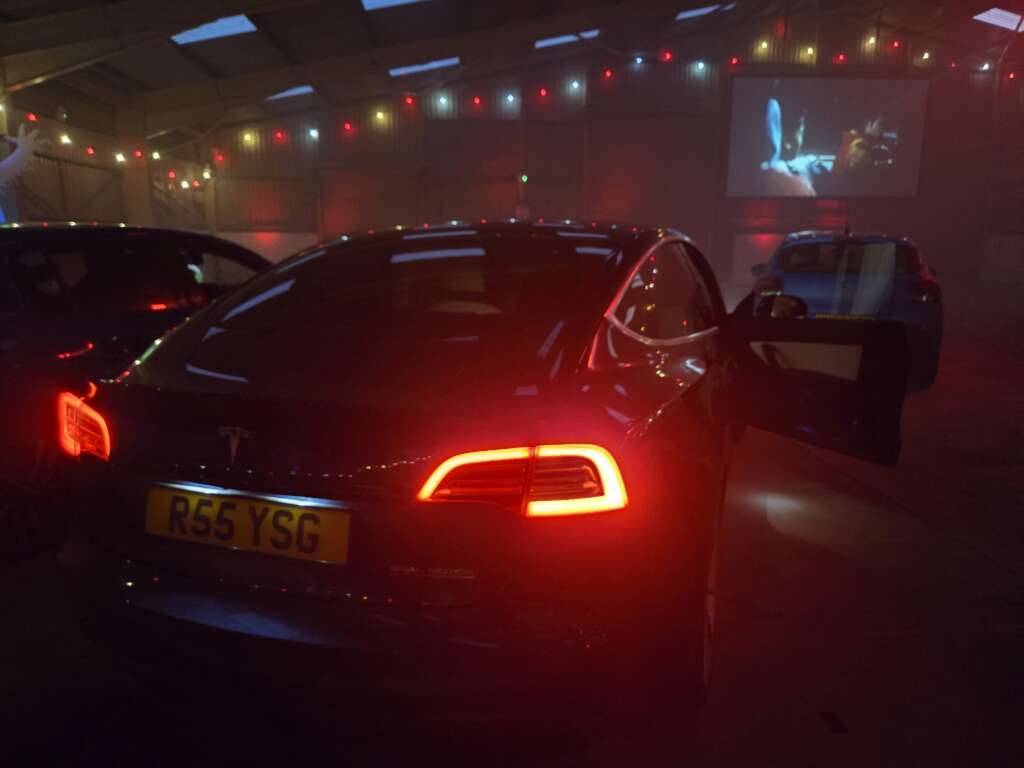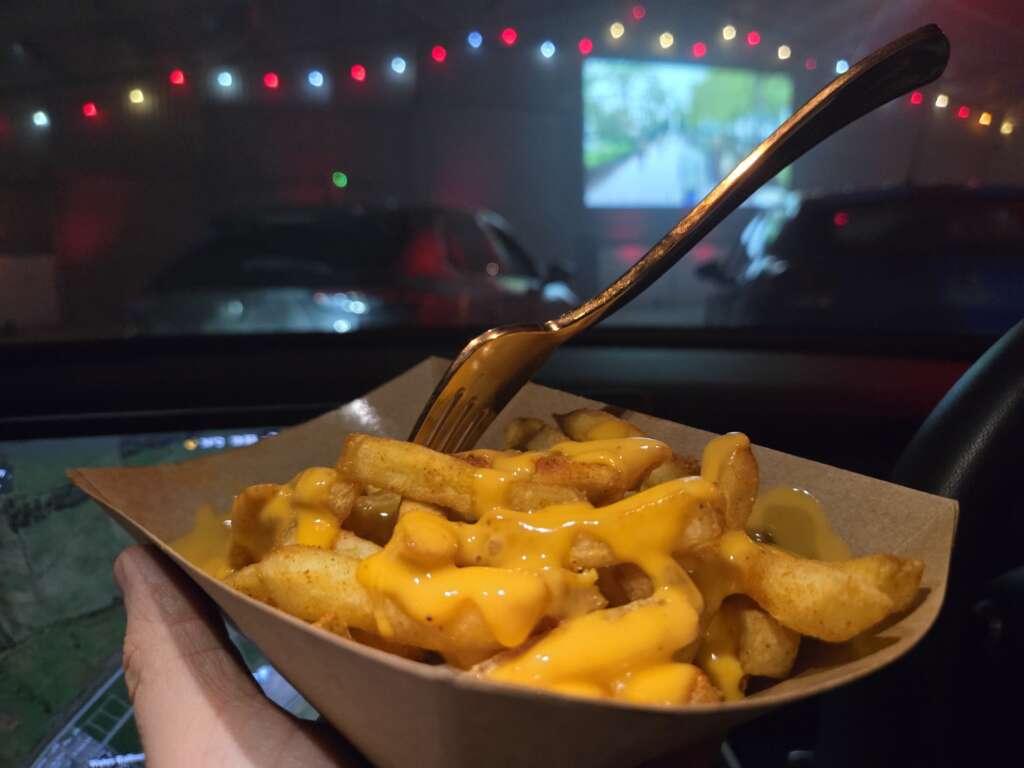When I think of drive-in movie theatres, scenes from Grease flash through my mind – open-air cinemas, classic cars, and the romantic notion of watching a film under the stars. It’s all very American, iconic, and nostalgic. But are drive-ins still relevant today?
The History of the Drive-In
The first drive-in theatre opened in New Jersey in 1933, and by the 1950s and 60s, they were a cultural institution across the United States. Families and couples alike would park up, tune in, and enjoy films with the added convenience of staying in their own cars. It’s said that at the peak, there were over 4,000 drive-ins across America. However, the appeal waned in the 1970s as multiplex cinemas took over, offering a more comfortable and predictable viewing experience.
In the UK, drive-ins were never quite as big – perhaps because of our unpredictable weather, or maybe the sheer practicality of multiplexes with their plush seats and soundproof rooms. For most of us, drive-ins are more of an American novelty, something to dream about but rarely experience.

The Covid Comeback
Then came Covid-19. As the world adjusted to social distancing, drive-ins saw a resurgence as a safe way to experience cinema. Across the UK, pop-up drive-ins appeared, offering us a slice of retro fun when the conventional cinema experience was out of reach.
I remember my own first drive-in experience, held by Street Food Cinema at the old Splott Market warehouse in Cardiff back in August 2020. I honestly can’t recall the film we watched, but that night left an impression. We parked, tuned into the car radio, and settled in for a night of cinematic nostalgia. There was something delightfully kitsch about it – you couldn’t help but feel part of a cultural moment, one that had seemed lost to previous generations.
The Drive-In Experience
Back in 2020, when we first experienced a drive-in cinema, it didn’t quite match the polished movie-going experience we’re used to. Tuning in via the car radio felt a bit cumbersome, and while the food was surprisingly tasty—thanks to local street food vendors—you had to compromise slightly on screen clarity.

Fast forward four years, and Street Food Cinema is still going strong, holding onto that retro charm. This Halloween, they’re hosting themed drive-in nights at Carmarthen Showground, mixing scares with snacks, so I thought, why not give it another shot?

It’s 2024, and things have certainly moved on—the car and the tech have, anyway. In the Tesla Model 3, it was effortless; a quick tune to 87.9 FM, and we were welcomed by the cinema’s DJ spinning some tracks. Watching through the windscreen may not quite match a traditional cinema screen, but the sound system more than compensated. The Tesla’s premium audio setup—with its 15 speakers, two amplifiers, and woofer—delivered impressively, even over FM radio, setting the tone nicely for Ghostbusters (1984).

Tickets to the Halloween film festival are £30 per car, plus a booking fee. Upon arrival, we were greeted by spooky ghosts and ghouls roaming about, some selling popcorn at £4 a bucket—not too steep. Being guided into a dimly lit warehouse ramped up the eerie atmosphere. Ordering food was simple once we scanned the QR code, though it took a couple of tries. A cheeseburger from Smokin Griddle was £8, and both the burger and cheese fries were fantastic.

There’s something inherently fun and communal about the experience. Nostalgic? Definitely. A bit gimmicky? Absolutely. But that’s part of its appeal. I’d forgotten how enjoyable it is to do something like this.
Are Drive-Ins Here to Stay?
There’s something special about drive-ins that goes beyond just the film on the screen. The experience brings a sense of adventure, maybe even a little escapism, that you just don’t get from the multiplex. But is it worth it in 2024?
With better sound options, improved pop-up locations, and a loyal following, drive-ins today seem to have refined the formula a bit. However, the core experience remains the same – it’s a nostalgic alternative to traditional cinema. For those of us who grew up without the golden-age drive-ins of the 50s and 60s, it’s a small way to step back in time.
In the end, the drive-in might not replace the traditional cinema experience, but it doesn’t need to. Drive-ins offer something unique – a mix of nostalgia, novelty, and the sheer fun of watching a film in your own car with great food and good company. So, as long as Street Food Cinema and others keep the spirit alive, I’d say it’s still worth a visit, if only for the memories.

